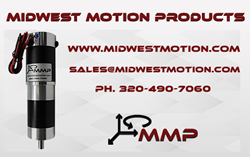AI Route Optimization Saves Money, Cuts Fuel Consumption and Provides Faster Delivery Times
.jpg)
People want their pizzas fast and hot.
Domino’s understands that hot pizza is a top priority, which is why it has adopted an Artificial Intelligence-driven platform “that predicts order volume and plans delivery routes accordingly.” The platform uses “historical and real-time data” to determine the “best routes” to get the pizzas to their customers fresh and steaming.
And Domino’s has succeeded; it has decreased delivery times, increased customer satisfaction, and branded itself for “fast, hot pizza.”
It is not surprising that companies like UPS, FedEx, and Amazon have all adopted AI-Route Optimization (AIRO) platforms to save money, reduce emissions, and provide fast delivery times. Amazon, which pioneered same-day delivery, uses an AI system that requires digesting a huge amount of data to determine the best routes to avoid traffic and get the driver to your home in the fastest possible time.
AIRO is revolutionizing how businesses approach logistics and transportation, whether for supply chain efficiencies or just delivering pizza or products. AIRO increases delivery speed, saves money, and makes customers happy.
Traditional Route Planning
In movies, you have seen passengers and cabbies debate the best route to get to the desired location: “If you take 35th, you will avoid the construction or go through the park to bypass backed-up traffic.”
This knowledge comes from driving the roads daily. It is intuitive, but you may not know that a car stalled 10 minutes ago or an accident has stopped traffic to a crawl.
Manual route planning leads to wasted time, higher fuel costs, slow routes, and bad reviews. As businesses expand, manual route planning has become too complex and time-consuming for workers to determine. This process can’t consider real-time events like car accidents or construction.
AI Route Optimization Overcomes These Challenges
AIRO primarily uses machine learning (ML) and deep learning (DL) algorithms to analyze vast amounts of data and generate the fastest, quickest route from point A to point B. These systems provide predictive analytics in real time by evaluating traffic conditions, weather reports, and road closures to make data-driven routing decisions. AIRO also predicts traffic trends and optimizes routes by analyzing historical data and detecting traffic patterns.
AIRO can also make real-time adjustments to reroute vehicles if there are unforeseen circumstances, such as a traffic pile-up or road closure. By doing this, companies optimize fuel consumption, fleet utilization, and downtime.
The Benefits of AI Route Optimization
- Cost Reduction: Every company should consider its Return on Investments when deciding whether to adopt new technology. Businesses that already have a fleet of vehicles can save significantly in lower fuel and maintenance costs. When UPS initially introduced its On-Road Integrated Optimization and Navigation (ORION) platform, it saved the company $320 million, with 35,000 of its 55,000 drivers using the system. UPS reduced its fuel consumption by 10 million gallons. AIRO systems lowered labor costs because drivers are on the road less, as are the vehicles, which means less wear and tear, leading to decreased maintenance expenses.
- Improved Customer Satisfaction: Do you remember the days when you expected your package at 5 p.m., and it came at 10 p.m. or didn’t arrive at all? With AIRO, companies provide more accurate delivery time estimates, leading to happier customers.
- Increased Operational Efficiency: AI optimizes routes, improves fleet utilization, and reduces administrative overhead.
- Enhanced Sustainability: Consumers seek out companies that practice environmentally friendly practices.
How AI Route Optimization Works
AIRO software use ML and DL to analyze high-quality data, such as delivery addresses, vehicle capacities, traffic conditions, and historical information. By using algorithms, such as Vehicle Routing Problems, the platform determines optimal routes by minimizing distance, travel time, and cost. Finally, AIRO adjusts routes in real time if an accident happens or traffic backs up on the original route, reducing the number of drivers sitting in their trucks waiting for cars to move.
Challenges to Consider
Companies need to plan whether they are incorporating an AIRO platform. Will they use an off-the-shelf system or develop their proprietary program? If they choose the latter, the businesses need to determine whether they have the IT skillset in-house to achieve their goals or will need to find a trusted software solutions provider with expertise in AI Route Optimization.
Regardless of how the companies implement an AIRO platform, they need to:
• Ensure the data is accurate and secure.
• Understand that the initial investment in AIRO technology can be costly.
• Overcome employee resistance to change.
• Guarantee seamless integration of AIRO with existing systems.
The Future of AI Route Optimization
Today’s technology is changing fast. What was cutting-edge yesterday may not meet the needs of tomorrow. Will the newest AIRO technology justify the change? The future will include advancements in machine learning, deep learning, and reinforcement learning. There will be more advances in IoT sensors, which will collect real-time data and improve route optimization. Autonomous Vehicles may certainly impact route optimization and the future of logistics, as well as Electric Vertical Take-Off and Landing aircraft.
AI Route Optimization is a powerful resource that has transformed businesses across a variety of industries. To stay competitive, companies need to embrace AIRO because it reduces costs, saves on fuel consumption, and improves delivery times to provide exceptional customer experiences. The potential benefits of AIRO will continue to grow along with advancements in the technology.

Atit Shah, Technical Director at Chetu, a global software solutions and support services provider, manages detailed custom solutions for various logistics and supply chain projects. His team also develops software solutions to help energy and utility companies manage billing, finance, and other operations.
Featured Product

